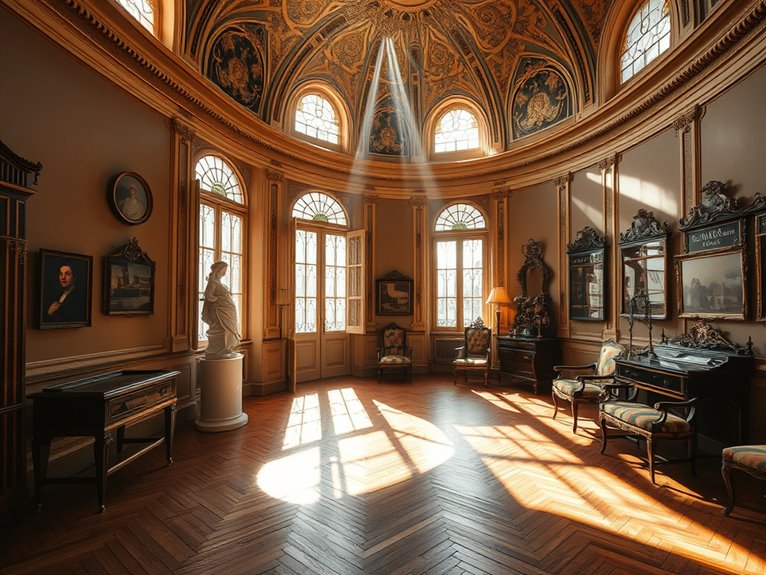
7 Unique Museums in Paris Beyond the Louvre
Looking to explore Paris's hidden museum gems? I've discovered seven fascinating alternatives to the Louvre that'll blow your mind! Check out the Musée Du Parfum for 3,000 years of fragrance history, ride century-old carousels at Musée Des Arts Forains, or explore wildlife art at Musée De La Chasse. Don't miss Victor Hugo's house, the Paris Sewer Museum, Carnavalet's city chronicles, or Moreau's dreamy symbolist mansion. These lesser-known treasures hold secrets most tourists never uncover.
Musée Du Parfum: a Journey Through Fragrance History

Located in a stunning Napoleon III-style building in the 9th arrondissement, the Musée du Parfum offers visitors an intimate glimpse into the fascinating world of French perfumery. This unique museum, operated by the legendary fragrance house Fragonard, showcases the art and science of perfume-making from ancient civilizations to modern times, making it an essential stop for both fragrance enthusiasts and cultural explorers.
The museum's collection spans over 3,000 years of perfume history, featuring rare artifacts, antique bottles, and traditional perfume-making equipment. Visitors can explore the evolution of fragrance creation, from ancient Egyptian alabaster vessels to ornate Art Nouveau atomizers, while learning about the intricate processes behind modern perfume production.
Quick Facts:
- Opening Hours: Monday to Saturday, 9:00 AM – 6:00 PM
- Admission: Free
- Guided Tours: Available in multiple languages (reservation recommended)
- Photography: Permitted without flash
- Location: 9 Rue Scribe, 75009 Paris
- Duration: Average visit 1-1.5 hours
- Accessibility: Wheelchair accessible
- Gift Shop: On-site, featuring exclusive Fragonard products
The Historical Collection Display features an impressive array of perfume-related artifacts, including rare Egyptian unguent jars, Roman perfume bottles, and 18th-century distillation equipment. The exhibition space showcases these pieces chronologically, allowing visitors to trace the evolution of perfumery through the ages. A unique highlight is the collection of "vinaigrettes" – tiny, ornate containers used during the Middle Ages to ward off unpleasant odors and disease.
The Modern Perfumery Workshop demonstrates contemporary fragrance creation techniques, complete with raw materials and essential oils visitors can sample. This interactive section includes a demonstration of the "organ" – the workspace where perfumers combine different scents to create new fragrances. Insider tip: Visit during weekday mornings to catch live demonstrations by resident perfumers.
Pro Tips:
The ideal time to visit is during weekday mornings, particularly Tuesday through Thursday, when tour groups are less frequent. Consider combining your visit with a perfume-making workshop (available by reservation) to create your own signature scent. The museum's expert guides often share information about upcoming special exhibitions and seasonal fragrance events that aren't widely advertised.
Practical Advice:
Avoid wearing strong perfumes or scented products when visiting, as this can interfere with the olfactory experience. Consider bringing a small notebook to record favorite scents and their stories, as the museum offers special discounts on featured fragrances to visitors. The nearby Opéra Garnier and Galeries Lafayette make excellent pairing destinations for a full day of Parisian culture and luxury exploration.
Musée Des Arts Forains: Step Into a Vintage Fairground Paradise
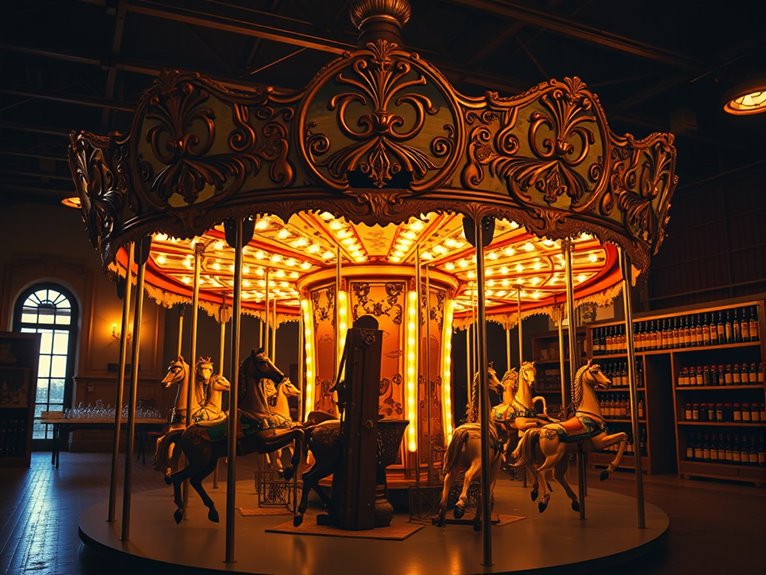
Hidden within the charming Bercy district of Paris, the Musée Des Arts Forains (Museum of Fairground Arts) transports visitors to a magical world of vintage carousels, carnival games, and whimsical fairground attractions from the Belle Époque era. This private museum, housed in former wine warehouses, showcases an extraordinary collection of restored fairground artifacts dating from 1850 to 1950.
Unlike traditional museums where items sit behind glass, this interactive wonderland encourages visitors to ride century-old carousels, play historical games, and immerse themselves in the nostalgia of bygone fairgrounds. The museum's founder, Jean Paul Favand, has spent decades collecting and preserving these mechanical marvels, creating an enchanting space where history comes alive through movement, music, and light.
Quick Facts:
- Opening Hours: Guided tours only, Tuesday-Sunday
- Price: €18 for adults, €10 for children (4-11)
- Visit Duration: 90 minutes
- Photography: Allowed without flash
- Language: Tours primarily in French, English tours available
- Reservation: Required in advance
- Accessibility: Most areas wheelchair accessible
- Best Time: Weekday mornings for smaller crowds
- Location: 53 Avenue des Terroirs de France, 75012 Paris
The Venetian Rooms showcase elaborate carnival scenes and games from 19th-century Venice, featuring stunning mirror work and intricate automatons. Visitors can try their hand at authentic carnival games and witness the mesmerizing "Music-Hall Theater," where mechanical figurines perform to vintage music. The highlight is a rare bicycle carousel where guests can actually pedal their way around just as fairgoers did over 100 years ago.
The Grand Salon houses magnificent carved carousel horses and incredible examples of fairground art, including the famous "German Salon" with its spectacular orchestrion (a self-playing orchestra). This room demonstrates the pinnacle of mechanical musical innovation from the era, with demonstrations during tours showing how these impressive instruments created an entire orchestra's worth of sound without any musicians present.
Pro Tips:
Book tours at least two weeks in advance, especially during peak tourist season (June-August). The museum is particularly magical during the winter months when special holiday decorations transform the space into an even more enchanting environment. Consider visiting during the annual Festival du Merveilleux (typically held between Christmas and early January) when the museum features special performances and extended opening hours.
Practical Advice:
The museum is accessed via guided tour only, so plan to arrive 15 minutes before your scheduled time. The nearest Metro station is Cour Saint-Émilion (Line 14), and it's advisable to eat before or after your visit as there are no food facilities on-site. The museum's temperature can fluctuate, so wearing layers is recommended. While most guides speak French, English audio guides are available upon request when booking – make sure to specify your language preference when making reservations.
Musée De La Chasse Et De La Nature: Where Art Meets Wildlife
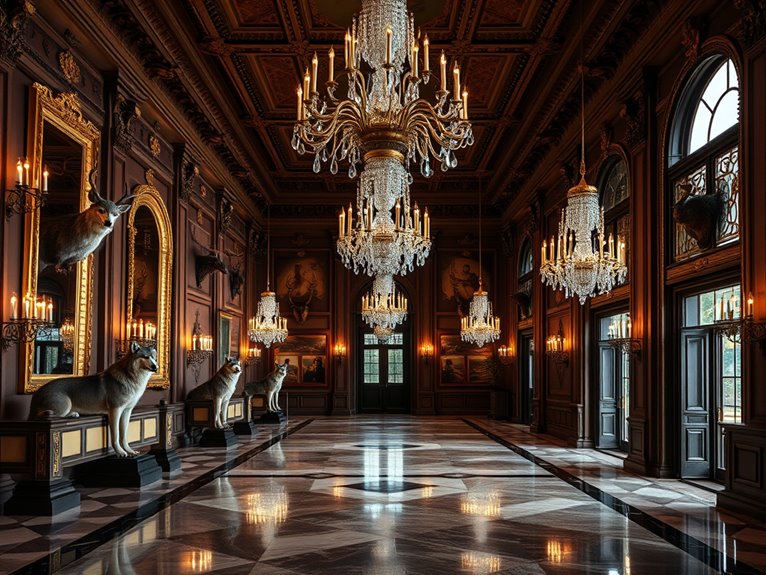
Nestled in the historic Marais district, the Museum of Hunting and Nature (Musée de la Chasse et de la Nature) offers visitors a fascinating blend of art, history, and natural science. This unique institution, housed in the magnificent Hôtel de Guénégaud, presents an unconventional take on the relationship between humans and wildlife through centuries of hunting culture, artistic expression, and environmental stewardship.
Unlike traditional natural history museums, this eccentric gem combines taxidermy specimens with contemporary art installations, antique weapons, and medieval tapestries in surprisingly whimsical ways. Visitors can explore themed rooms dedicated to specific animals, where classical paintings share space with modern multimedia exhibits, creating an immersive experience that challenges conventional museum expectations.
Quick Facts:
- Opening Hours: 11:00 AM – 6:00 PM (Closed Mondays)
- Best Time to Visit: Weekday mornings for fewer crowds
- Admission: €12 for adults, free for under 18
- Photography: Allowed without flash
- Guided Tours: Available in French and English (reservation required)
- Accessibility: Elevator access to all floors
- Average Visit Duration: 1.5-2 hours
The Ground Floor's Cabinet of Arms presents an impressive collection of hunting weapons spanning several centuries, alongside contemporary artwork that explores themes of power and survival. This floor also houses temporary exhibitions that regularly rotate, ensuring repeat visitors discover something new with each visit.
The First Floor features the museum's celebrated animal rooms, each dedicated to a specific creature. The Wolf Room, with its surprising mix of historical artifacts and modern interpretations, stands out for its innovative sound installation that creates an immersive forest atmosphere. Don't miss the hidden drawers throughout the exhibition spaces, containing additional artifacts and information.
The Second Floor houses the Bird Room and Dog Room, where visitors can admire exceptional taxidermy specimens alongside paintings from renowned artists. The little-known telescope in the Bird Room offers visitors a unique perspective on the courtyard's architectural details.
Pro Tips:
Visit during the late afternoon on weekdays to experience the museum's unique lighting design, which transforms the spaces as natural light fades. The museum's intimate setting means it rarely feels crowded, but temporary exhibitions can draw larger groups during weekends. Consider combining your visit with the nearby Picasso Museum, as both institutions offer complementary perspectives on artistic interpretation.
Practical Advice:
The museum's detailed descriptions are primarily in French, so English-speaking visitors should consider renting an audio guide (€5) or downloading the museum's app before visiting. The museum shop offers unique gifts and books related to nature and art, but note that they accept credit cards only for purchases over €15. The neighborhood features numerous cafes and restaurants, making it ideal for combining cultural exploration with culinary experiences in the Marais district.
Musée Carnavalet: The Story of Paris Through the Ages
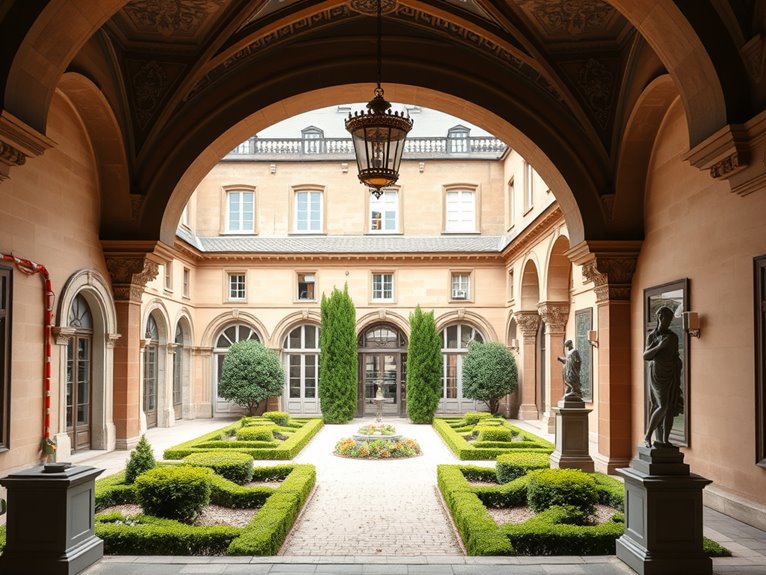
Nestled in the heart of the Marais district, the Musée Carnavalet stands as Paris's oldest municipal museum, telling the rich history of the city from its Roman origins to the present day. This fascinating institution, housed in two magnificent mansions – the Hôtel Carnavalet and the Hôtel Le Peletier de Saint-Fargeau – reopened in 2021 after an extensive renovation, offering visitors a renewed perspective on the city's evolution through 3,800 years of history.
Through an extraordinary collection of over 615,000 artifacts, paintings, photographs, and historical rooms, the museum presents a unique chronological journey through Paris's transformation from a medieval town to a modern metropolis. Each carefully curated exhibition space reveals fascinating stories about the city's architectural development, social movements, artistic achievements, and the daily lives of Parisians throughout different eras.
Quick Facts:
- Opening Hours: Tuesday to Sunday, 10:00 AM to 6:00 PM
- Admission: Free permanent collections
- Best Time to Visit: Weekday mornings, especially Tuesday or Thursday
- Photography: Allowed without flash
- Audio Guide: Available in multiple languages (€5)
- Accessibility: Fully wheelchair accessible
- Average Visit Duration: 2-3 hours
Historical Mansions
The museum's architecture itself is a representation of Parisian history, with the Hôtel Carnavalet dating back to the 16th century and the Hôtel Le Peletier built in the 17th century. The buildings feature stunning examples of French Renaissance architecture, complete with period rooms that transport visitors through time. Insider tip: Look for the original carved stone mascaron faces on the courtyard façade, each telling its own story about the building's past.
Collections and Exhibits
The chronological layout spans multiple floors, featuring everything from archaeological findings to contemporary art. Highlights include Marcel Proust's bedroom, revolutionary period artifacts, and an extensive collection of French Revolution memorabilia. Unique feature: The museum houses the original "Liberty, Equality, Fraternity" sign from the Bastille prison.
Pro Tips:
Start your visit on the top floor and work your way down to experience the chronological flow of Paris's history most effectively. The museum's layout can be overwhelming, so consider focusing on specific periods or themes that interest you most. The quietest times for photography are during weekday afternoons, particularly in the period rooms where natural light creates stunning effects.
Practical Advice:
The museum's location in the Marais makes it perfect for combining with other neighborhood attractions. Consider visiting on a Thursday when many other museums are closed but Carnavalet remains open. The museum's café offers a peaceful courtyard setting for breaks, and the surrounding area features numerous authentic Parisian cafés and restaurants. For the best experience, download the free museum app before your visit, which offers additional context and self-guided tour options not available in the physical space.
La Maison De Victor Hugo: the Author's Private Universe
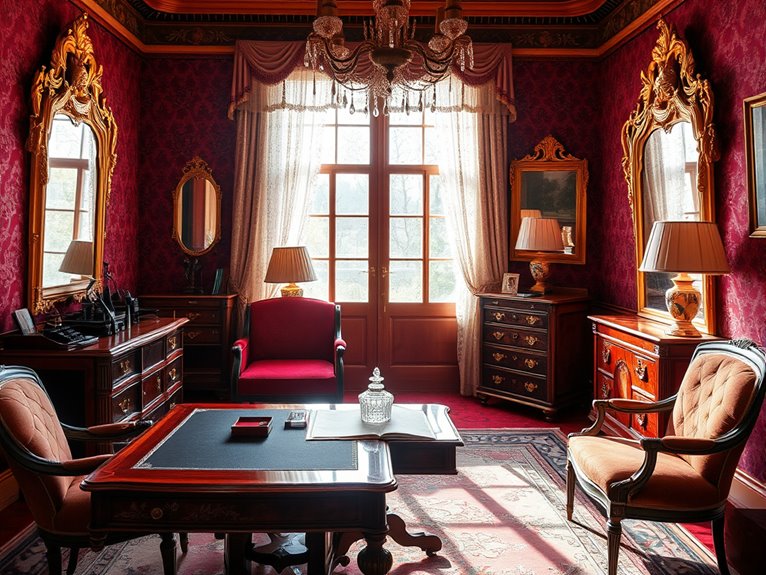
Step into the intimate world of one of France's most celebrated literary giants at La Maison de Victor Hugo, where the genius behind "Les Misérables" and "The Hunchback of Notre-Dame" spent 16 years of his life. Located in the stunning Place des Vosges, this museum-house offers visitors an unprecedented glimpse into the personal universe of Victor Hugo, showcasing his evolving taste in interior design and his multifaceted talents as a writer, artist, and decorator.
The museum spans multiple floors of the Hôtel de Rohan-Guéménée, with each room meticulously restored to reflect different periods of Hugo's life. From his time in exile to his triumphant return to Paris, the collection includes personal belongings, original manuscripts, artwork, and furniture that Hugo himself designed, providing an intimate portrait of the author's creative process and daily life.
Quick Facts:
- Opening Hours: Tuesday to Sunday, 10:00 AM – 6:00 PM
- Admission: Free for permanent collections
- Best Time to Visit: Weekday mornings
- Photography: Allowed without flash
- Accessibility: Limited, historic building with stairs
- Audio Guide: Available in multiple languages (€5)
- Location: 6 Place des Vosges, 75004 Paris
- Metro: Saint-Paul or Bastille
Chinese Drawing Room
The most spectacular room in the house, decorated according to Hugo's own designs during his exile in Guernsey. The red and gold chinoiserie demonstrates Hugo's lesser-known talent as an interior designer and his fascination with Oriental aesthetics. The room features original furniture and decorative elements personally selected by the author.
Hugo's Study
This preserved workspace contains the standing desk where Hugo wrote many of his masterpieces. The room maintains its original layout, including personal items such as his inkwell and pen. Insider tip: Look for the hidden marks on the desk where Hugo would rest his elbows while writing standing up.
Antechamber and Red Room
These rooms showcase Hugo's life during different periods, featuring family portraits, first editions of his works, and personal correspondence. The Red Room contains the bed where Hugo died in 1885, preserved exactly as it was on that day.
Pro Tips:
For the most atmospheric experience, visit during late afternoon when sunlight streams through the windows of the Place des Vosges, illuminating the rooms with a golden glow that enhances the period ambiance. Combine your visit with a morning walk through the Marais district, finishing at Place des Vosges for lunch before exploring the museum when most tour groups have departed.
Practical Advice:
The museum's location in Place des Vosges makes it easily combinable with other Marais attractions. Given the free admission, lines can form during peak tourist season. Plan to arrive at opening time or during lunch hours for the quietest experience. The museum's bookshop offers unique editions of Hugo's works and period-inspired items that make excellent souvenirs. Consider downloading the museum's free app before visiting for additional context and historical information about the collection.
Musée Des Égouts De Paris: Exploring the City's Underground History
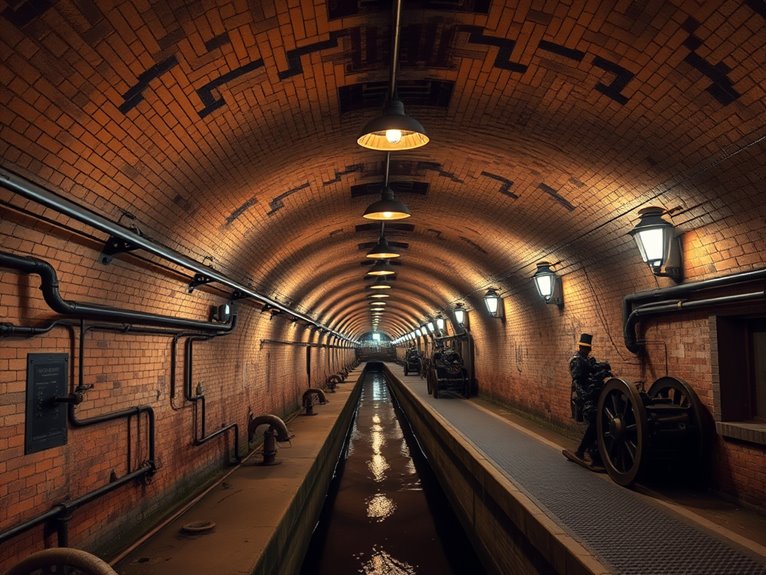
Unique Museums in Paris: Musée Des Égouts De Paris
———————————————————–
Paris's sewer museum offers visitors a fascinating journey through the city's underground history, quite literally beneath their feet. Located in the 7th arrondissement, this unconventional museum showcases the remarkable engineering feat that transformed Paris from a medieval city plagued by sanitation issues into a modern metropolis with one of the world's most sophisticated sewer systems.
The Musée Des Égouts De Paris presents a unique perspective on urban development, allowing visitors to explore actual functioning sewers while learning about public works, engineering, and environmental conservation. Unlike traditional museums, this experience combines historical exhibits with the authentic sights, sounds, and yes, even smells of Paris's underground infrastructure.
Quick Facts:
- Opening Hours: 10 AM – 5 PM (Closed Mondays and holidays)
- Admission: €9 for adults, €4.50 for children (6-16)
- Best visiting time: Spring or Fall (fewer odors)
- Duration: 1-hour guided tour
- Photography: Allowed, but challenging due to low light
- Accessibility: Not recommended for those with mobility issues
- Languages: Tours available in French and English
The Main Exhibition Gallery
Walking through the main gallery, visitors encounter detailed models showing the evolution of Paris's sewer system from Roman times to the present. The gallery features interactive displays explaining water treatment processes and the role of modern sewage management in urban planning. Location: Enter at Pont de l'Alma, Left Bank. Insider tip: Visit during weekday mornings for smaller tour groups and more personalized attention from guides.
The Historic Tunnels
The preserved 19th-century tunnels showcase the innovative engineering of Baron Haussmann's era. Original equipment, including massive wooden balls used for cleaning, demonstrates historical maintenance techniques. These tunnels run parallel to actual working sewers, providing an authentic yet safe experience. Insider tip: The tunnel temperature remains constant at 15°C (59°F) year-round, so bring a light jacket regardless of surface weather.
Pro Tips:
The best experience comes from timing your visit during dry weather, as heavy rains can intensify the underground atmosphere. Consider scheduling your tour during the early morning sessions when the air is freshest and crowds are minimal. Bring a camera with good low-light capabilities, as the lighting conditions can be challenging but offer unique photographic opportunities.
Practical Advice:
Wear comfortable, closed-toe shoes with good grip, as some surfaces can be slick. Consider bringing hand sanitizer and avoiding touching surfaces unnecessarily. While the museum is well-ventilated, those sensitive to strong odors might want to bring a small scarf or mask. The museum provides excellent context for understanding Paris's urban development, but it's best experienced as part of a larger itinerary that includes above-ground attractions in the 7th arrondissement, such as the Eiffel Tower or Les Invalides.
Musée National Gustave Moreau: A Symbolist Artist's Dream House
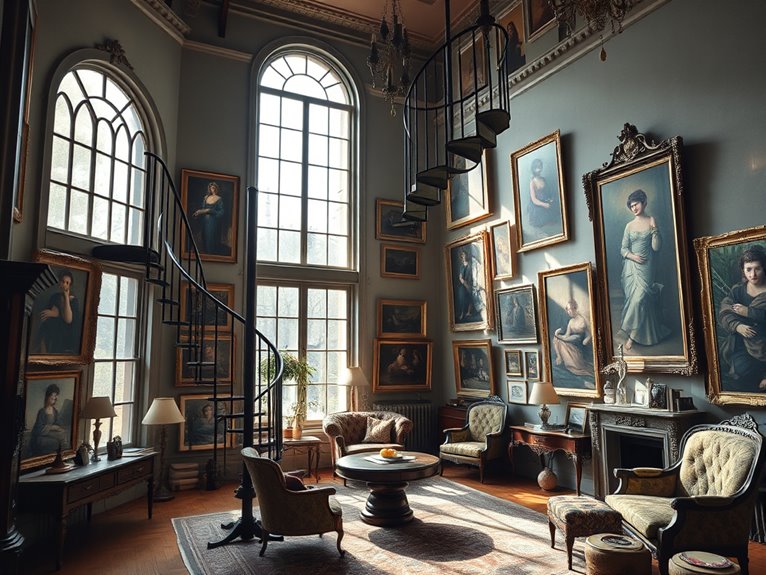
Tucked away in the 9th arrondissement of Paris, the Musée National Gustave Moreau stands as a remarkable showcase to one of France's most influential Symbolist artists. This former home-turned-museum showcases not only Moreau's extraordinary body of work but also provides an intimate glimpse into the artist's private world, preserved exactly as he intended it to be displayed.
The museum spans three floors of a 19th-century townhouse, purposefully transformed by Moreau himself in his final years to serve as both a gallery and archive of his life's work. With over 25,000 pieces, including paintings, watercolors, and drawings, visitors can immerse themselves in the artist's fantastical universe of mythological scenes, biblical stories, and mysterious symbolic imagery.
Quick Facts:
- Opening Hours: 10:00 AM – 5:15 PM (Closed Tuesdays)
- Admission: €7 (adults), Free for EU residents under 26
- Photography: Allowed without flash
- Best Visit Time: Weekday mornings
- Accessibility: Limited (steep stairs, no elevator)
- Location: 14 Rue de la Rochefoucauld, 75009 Paris
- Average Visit Duration: 1-2 hours
The Ground Floor: Original Living Quarters
The museum experience begins in Moreau's preserved living quarters, featuring his personal furniture, family portraits, and intimate belongings. This floor offers unique insight into the artist's daily life and includes his bedroom, dining room, and study. The original wooden cabinets containing thousands of drawings remain exactly as Moreau left them.
The First Floor: Intimate Gallery
This level houses smaller works and preliminary sketches in Moreau's original arrangement. The carefully curated space showcases the evolution of his artistic process, with studies for larger paintings and detailed drawings revealing his meticulous approach to composition.
The Second Floor: Magnificent Studios
The crown jewel of the museum is the pair of enormous studios on the top floor, featuring soaring ceilings and walls covered floor-to-ceiling with Moreau's most impressive paintings. The architectural transformation of these spaces was personally overseen by Moreau, creating dramatic galleries flooded with natural light.
Pro Tips:
Visit on weekday mornings to experience the museum in relative solitude, allowing for contemplative appreciation of Moreau's intricate works. The lighting is particularly magical during mid-morning hours when sunlight streams through the studio windows, illuminating the paintings as the artist intended. Consider bringing binoculars to examine the detailed elements in larger works mounted high on the walls.
Practical Advice:
The museum's vertical layout and narrow staircases can be challenging for visitors with mobility issues. Plan to spend at least 90 minutes exploring all three floors, and consider purchasing the detailed audio guide (available in multiple languages) to fully understand the symbolic elements in Moreau's complex works. The neighborhood also offers excellent cafés and restaurants for post-visit refreshment, with the famous Rue des Martyrs just a short walk away.
